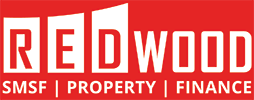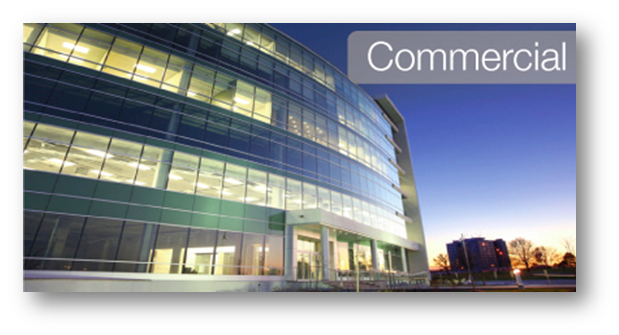Almost on a daily basis, we would be able to see articles from either web or newspapers written onthe topic of investing in Commercial Property using Self Managed Superannuation Funds (“SMSF”), which may not be a surprise as there is clearly an upside of benefits embedded in such an option. And an increasing number of smart Australian investorsare joining this trendy bandwagon.
Thinking of starting your own? Redwood Advisorycan help you make it happen.
Ivan Filipovic, Director Redwood Advisory has outlined the key process of investing in commercial property below and highlighted the risks along with benefits of investing in commercial property through your SMSF.
Known is the exception that SMSFs cannot own property that is used by members, the other is that the property owned is primarily used for business purposes. This rule also applies to one of the few occasions where a SMSF is allowed to buy property from its members. If you are a business owner and paying monthly rent to a property fund, investing in commercial property through your SMSF is the one superior option for you. At Redwood Advisory, many of our clients set up an SMSF to purchase their business premise or commercial property,as they prefer the idea of paying rent to their SMSF rather than to a distant landlord to be more self-empowered.
Comparing commercial properties to residential property, business real properties usually generate higher rental yields, thus, to a large extent, are a more attractive investment, particularly if you have already been a business owner. Nevertheless, buying commercial property is not easy, and usually takes a lot of research including an independent property valuation and assessment on estimated rental yield.
How do I invest in a Commercial Property using an SMSF?
If you do not have an SMSF yet, you are welcome to contact Redwood Advisory on 1300 790 110 to set up an SMSF today.
Once we helped you set up your SMSF,your only task would be to consider whether fund the property purchase in cash or by borrowing to invest (further details could be viewed at https://redwoodadvisory.com.au/smsf-property-investment/).
Generally, SMSF’s use a contractual agreement called Limited Recourse Borrowing Arrangement (“LRBA”), meaning that banks can only access your property shall a discharge of any outstanding debts triggered in the event of default, while they have no access to any of the SMSFs other assets. The property itself is held by a separate trustee to the SMSF (usually referred to as the Bare Trust) and upon payment of the final instalment by the SMSF to the lender, the property will be transferred directly to the SMSF.Take note,the SMSF needs to be set up prior to entering into a LRBA.
Why should I borrow to invest in commercial property rather than pay in cash?
Based on our observation and on-going research, more Australians are choosing SMSF borrowing to invest in property, so much so that the RBA has recently expressed concerns around the potential ‘property bubble’ caused by SMSFs. The benefits of arranging SMSF borrowing includes:
- You can own your business premises through your SMSF
- Use you rental income and contributions made to the SMSF to service your loan and pay your debt faster
- Maximum rate of tax on rental income is 15% and if your SMSF is in pension phase this rate reduces to 0%. This is favourable to personally held property where rental income is taxed at your marginal tax rate which in some cases can be as high as 46%
- If held for greater than 12 months, any capital gain made on the investment property will be taxed at a maximum rate of 10% or 0% if the SMSF is in pension phase and
- By investing in property you can effectively diversify your portfolio
At the same time, there are also risks involved, such as:
- Costs involved in setting up a LRBA (of course Redwood Advisory’s costs are the lowest in the industry without compromising our service or quality, we are experts)
- Buying is SMSF is complicated and generally only suitable (in our opinion) for SMSFs with $100,000 combined funds and seek advice in structuring the LRBA based on your personal circumstances.
An example of the benefits of borrowing to invest in property through your SMSF
In the example below we outlined the benefits of investing in property through your SMSF (assuming a tax rate of 15%) as opposed to investing in property outside of an SMSF (assuming a tax rate of 46.5%):
| SMSF | NO SMSF | |
| Contribution | $100,000 | $100,000 |
| Rent | $100,000 | $100,000 |
| Total | $200,000 | $200,000 |
| Tax Rate | 15% | 46.50% |
| Tax | $30,000 | $93,000 |
| Cash for debt reduction | $170,000 | $107,000 |
| Cash Benefit | $63,000 |
It is clear that huge upsides outweigh the possible downsides.
Should I register for GST?
You should only register for GST if you are generating income of more than $75,000 per year. Of course, voluntary registration is available.
Do not hesitate to contact Redwood Advisory on 1300 790 110 to discuss investing in commercial property. We offer an end-to-end service for every of out clients considering purchasing a commercial property through an SMSF.
Disclaimer:
The content has been prepared without taking account of the objectives, financial situation or needs of a particular individual and does not constitute financial product advice. Individuals should seek professional advice prior to investing in commercial property.




